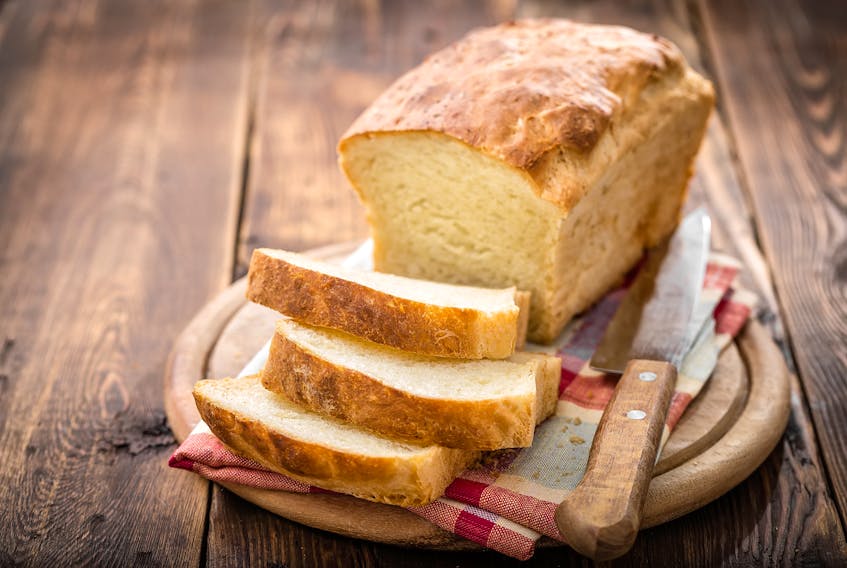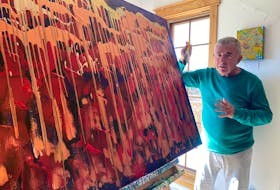
During these strange times, when the lucky ones of us are staying safely at home, many of us have taken up baking bread.
There are some who have done so regularly for years and others who’ve tried it on occasion but not made a habit of it. I am in the latter group and have been working on my skills for a few weeks.
Last week I took a good look through my favourite bread cookbook, Janice Murray Gill’s Canadian Bread Book. Gill filled the book with explanations of how bread works, notes on ingredients and techniques, colour pictures of many types of bread, instructions for shaping various loaves and numerous recipes.
I found that her Basic Homemade Brown Bread recipe has a sweet flavour and a fine texture, and it makes good toast. The use of all purpose flour along with the whole wheat flour creates a bread that is less dense and has more volume than one made with only whole wheat flour.
Hand kneading can be satisfying, but I opted for technology and used a stand mixer with a dough hook to knead the dough.
Here is the recipe.
Basic Homemade Brown Bread
Adapted from Gill, Janice Murray: Canadian Bread Book. McGraw-Hill Ryerson Limited, Toronto, 1980.
- 30 mL (2 tbsp) dried yeast
- 250 mL (1 cup) lukewarm water (approx. 30 C/85 F)
- 5 mL (1 tsp) sugar
- 375 mL (1½ cups) scalded milk
- 125 mL (½ cup) honey
- 75 mL (⅓ cup) butter
- 20 mL (4 tsp) salt
- 750 mL (3 cups) whole wheat flour
- Approx. 750 mL (3 cups) all purpose flour
Proof the yeast in the lukewarm water with the sugar.
Scald the milk and add the honey, salt and butter, stirring to melt. Let stand till lukewarm.
Meanwhile, combine all of the whole wheat flour with 500 mL (2 cups) of the white, reserving 250 mL (1 cup) of the white flour.
Test the temperature of the milk mixture – it should be no warmer than 30 C/85 F – and add the yeast mixture to it. Stir in about ½ of the mixed flours and beat very well indeed.
Continue adding the mixed flours until the dough is too stiff to beat and cleans the sides of the bowl.
Then turn out, add more white flour to keep dough from sticking. This dough will be fairly sticky, so care must be taken not to add too much flour and make it stiff. Knead until elastic and place in a greased bowl; cover tightly and leave to rise until double. Punch down, turn onto lightly floured board, knead a couple of turns, divide in two, and shape into loaves. Place in greased loaf pans and cover with a tea towel. Leave to rise till double. Bake in 200 C (400 F) oven for 30 minutes. Turn out, brush with melted butter, and cool on racks.
Makes 2 loaves

I was impressed with the appearance of the loaves when I removed them from the oven, but a little less so when I sliced into the first one. There was a big tunnel running through the top half of the loaf, from one end to the other. This makes for interesting sandwiches!
You can see a picture of the offending tunnel on my March 31 entry on Facebook.com/IslandGusto.
The problem wasn’t with the recipe. It was with my technique for shaping the loaf. I’d divided the dough into halves, one for each loaf, used a rolling pin to roll each piece of dough into a rectangle, rolled each rectangle into a jelly roll, sealed the ends by pressing with the side of my hand, folded the flattened ends to the underside of the loaf and placed the loaf to the greased pan.
Either I didn’t roll it tightly enough to seal the surfaces of the dough together when shaping the loaf or I had too much flour on the board when rolling out the dough, preventing it from sticking together when rolled up.
It was less than flattering to find that the loaf I subsequently made using a bread machine had an excellent interior structure.
Not to be outdone by a machine, I will be working on my loaf-shaping skills soon!
Margaret Prouse, a home economist, can be reached by email at [email protected].









